 Weird Stuff
Weird Stuff  Weird Stuff
Weird Stuff  Our World
Our World 10 Archaeological Discoveries of 2025 That Refined History
 Weird Stuff
Weird Stuff 10 Fascinating Facts You Might Not Know About Snow
 Miscellaneous
Miscellaneous Top 10 Things Crypto Was Supposed to Change & What Actually Did
 History
History 10 Huge Historical Events That Happened on Christmas Eve
 Music
Music 10 Surprising Origin Stories of Your Favorite Holiday Songs
 History
History 10 Less Than Jolly Events That Occurred on December 25
 Weird Stuff
Weird Stuff 10 Funny Ways That Researchers Overthink Christmas
 Politics
Politics 10 Political Scandals That Sent Crowds Into the Streets
 Weird Stuff
Weird Stuff Ten Bizarre Facts About The Doge Meme
 Weird Stuff
Weird Stuff 10 Weird Things People Used to Do at New Year’s
 Our World
Our World 10 Archaeological Discoveries of 2025 That Refined History
 Weird Stuff
Weird Stuff 10 Fascinating Facts You Might Not Know About Snow
Who's Behind Listverse?

Jamie Frater
Head Editor
Jamie founded Listverse due to an insatiable desire to share fascinating, obscure, and bizarre facts. He has been a guest speaker on numerous national radio and television stations and is a five time published author.
More About Us Miscellaneous
Miscellaneous Top 10 Things Crypto Was Supposed to Change & What Actually Did
 History
History 10 Huge Historical Events That Happened on Christmas Eve
 Music
Music 10 Surprising Origin Stories of Your Favorite Holiday Songs
 History
History 10 Less Than Jolly Events That Occurred on December 25
 Weird Stuff
Weird Stuff 10 Funny Ways That Researchers Overthink Christmas
 Politics
Politics 10 Political Scandals That Sent Crowds Into the Streets
 Weird Stuff
Weird Stuff Ten Bizarre Facts About The Doge Meme
10 Obscure Death Practices And Beliefs Observed By Anthropologists
Eating the bodies of relatives, marrying the spirit of the dead to dolls, or dying after having bitten a corpse sounds to us like completely incomprehensible actions.
Yet, for more than a century, anthropologists have been living in close contact with populations all across the world, studying their attitudes toward death, and trying to understand their logic and meaning. Here is a selection of the strangest practices and beliefs about death that have been documented by anthropologists during their explorations.
10 The ‘Wine Of The Corpse’ In Borneo
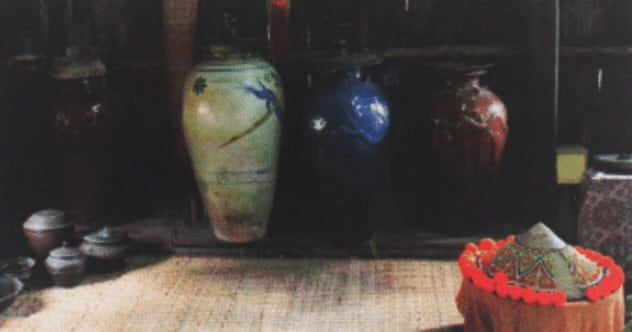
Southeast Asia is widely known for its elaborate (and for a Western audience, sometimes unsettling) funeral customs. In his research, anthropologist Peter Metcalf noticed that the Berawan population in Borneo disposed of corpses with a method similar to that adopted for preparing rice wine, a local drink.
Just like rice, dead bodies are washed, laid out in front of a communal longhouse, and stored in big jars.[1] The fluids of decomposition are allowed to flow out through a bamboo pipe and are collected in another vase. Meanwhile, the solid part of the body is laid to rest in a cemetery.
A similar treatment of dead bodies, centered on the separation between solid and liquid parts, was described by Robert Hertz among the Ngaju of Borneo. Hertz writes, “Relatives, especially the widow, are compelled either daily or at fixed dates to collect the liquid produced by the decomposition of the flesh, to smear it on their own body, or to mix it into their food.”
9 Compassionate Cannibalism In The Amazonian Rain Forest
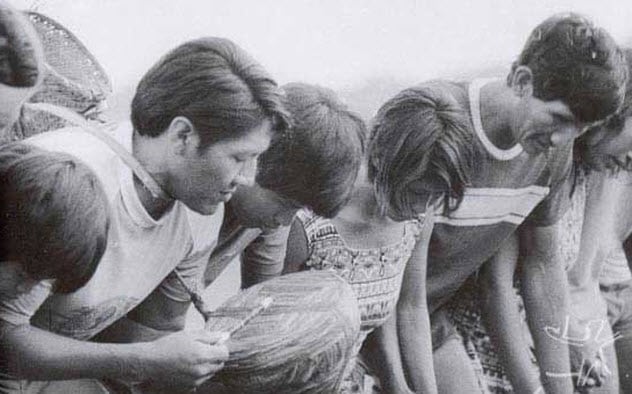
The practice of cannibalism has fascinated anthropologists and explorers for centuries. For a long time, “cannibal” was used as shorthand to define peoples and cultures that were thought to be “uncivilized.” Anthropologist Beth Conklin described at length the practice of “compassionate cannibalism” among the Wari tribe of the western Amazonian rain forest.
To consume the flesh of a deceased relative was considered a sign of respect among the Wari. The earth was thought to be dirty and polluting, and burying a relative in the ground was deemed highly inappropriate.
At the same time, the body’s persistence and integrity would cause distress in those related to the deceased as they would keep on thinking about the corpse and the person’s absence. Therefore, people wanted to be eaten. Only in that way would the attachment to the dead body be diminished, allowing the survivors to go on with their lives.
Interestingly, Conklin noticed that the most distressing aspect of such cannibalistic rituals for the participants was not the eating of the corpse but its dismemberment before roasting it. In that moment, the body lost all resemblance to the person whom the bereaved had known and loved.[2]
8 Doll-Bride Marriage In Japan

Anthropologist Ellen Schattschneider describes a funeral custom which began during World War II in northern Japan. In that period, many young men died before marrying and having the chance to procreate. This was considered a “bad death.” The spirits of these dead would be restless and return to haunt their families.[3]
Even today, if unmarried children die, rituals must be performed to ensure the rest of their souls. A marriage is thus performed between the spirit of the dead (symbolized by a photograph) and a spirit bride, represented by a doll or figurine. These objects are put in a box, which can be preserved for a long time. The spirit bride will then accompany the dead person for 30 years until the deceased finally reaches the other world.
Similar behavior, involving not dolls but the illegally stolen corpses of young unmarried women, has reportedly occurred in China.
7 Sky Burial In Mongolia

For a long time in Mongolia, people would leave their dead to decompose in the open air. When a person died, a good spot was chosen, usually near a river populated by animals and birds which consumed the body as quickly as possible. For several months after the “sky burial,” the living would avoid the place so as not to witness the decomposition of the corpse.[4]
In 1955, funeral reform was enacted because the socialist administration considered sky burials to be inappropriate in a modern and urbanized society. The local population often resisted the newly imposed practice of interring the dead in the ground as the earth was believed to be the domain of evil spirits.
As reported by anthropologist Gregory Delaplace, the funeral reform had mixed success. Although most people are buried today rather than left to decompose in the open air, “cemeteries do not have the appearance wished by the reformed. They never became the neat gardens of remembrance [ . . . ] hoped for by the government. Until today, cemeteries resembled more vast and vague grounds [ . . . ] apparently without order.”
6 The Stigma Of Death While Alive In Japan
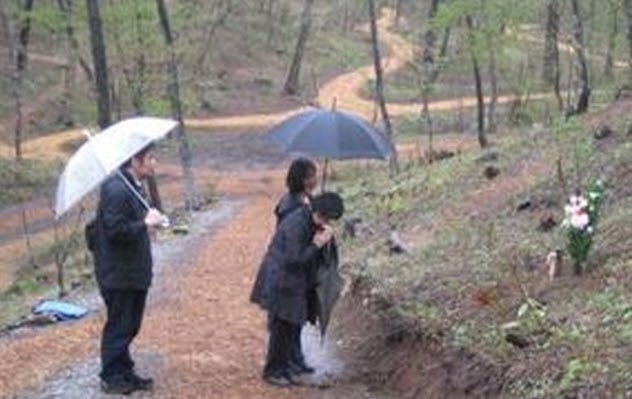
A Japanese cultural trait that has long interested anthropologists is the figure of the muenbotoke (“disconnected spirit”). These are the spirits of people who died childless or without having family members to ensure their commemoration in ancestral tombs by performing rituals on their graves after their deaths.
People who have the prospect of dying “unrelated” suffer from a great social stigma while still alive. So, new funeral practices have emerged in recent years to alleviate the suffering caused by such a condition.
Anthropologist Jieun Kim documented the lives of the inhabitants of a quarter in Yokohama, which is mostly peopled by the homeless or individuals who may die in solitude without relatives willing to take care of their bodies. There, charitable associations have been created to ensure that medical personnel or volunteers monitor the inhabitants frequently so that their corpses can be promptly cremated and tended to with proper rituals at the moment of death.[5]
The remains are then put in a common grave where volunteers perform regular memorial services, allowing the spirits of the deceased to find their final peace and helping them to reach the respected status of “ancestor” despite the absence of family members willing to honor their souls.
5 Constant Conversations With The Dead In India

When we think about the ways in which people try to establish “contact” with the dead, we tend to imagine a sensational event like a seance or an obscure, vague conversation with a spirit medium. This was certainly not the case among the Sora tribe in India.
As documented by anthropologist Piers Vitebsky, the Sora had the unusual custom of having prolonged conversations with their dead, which continued for years after the moment of death. These occurred through the mediation of a funeral shaman in a state of trance.
The contents and timing of such conversations are described by Vitebsky as follows:
In a large village of 500 people, a dialogue may take place from about five times a week to about 10 times a day. [ . . . ] Dialogues contain a quest for a verdict or for an increase in certainty. [ . . . ] People seek the cause of a patient’s illness, [ . . . ] while at a funeral, they seek understanding about the cause of the victim’s death.[6]
In a recent book, Vitebsky described the waning of this practice. Deemed primitive and superstitious by present-day generations, extensive conversations with the dead no longer take place with such frequency as the Sora shift toward Hindu or Christian beliefs.
4 Biting The Dead And Restraining The Living Among The LoDagaa In West Africa

In a classical (and rather intense) anthropological text, Jack Goody analyzed the funeral customs of the LoDagaa of West Africa. After death, the body would be washed and anointed by old women.
If the deceased was a man, the widow would be prevented from helping out in these operations as it was feared that she might commit suicide by biting the corpse. In fact, it was believed that any contact with dirt on the dead body might be lethal and that a wife might take her life this way to follow her husband in the Land of the Dead.
After the body was prepared, it was taken out of the house through a special hole made into a wall of the courtyard and placed on a funeral platform. There, it could stay for months until all friends and kin, even coming from afar, could view it.[7]
According to complex rules, the close relatives of the deceased who showed intense emotional reactions during the funeral ritual were then restrained using hide, fiber, and strings as it was feared that they might harm themselves or attempt suicide. The latter was a common way of showing extreme suffering during funeral rituals.
3 The Adoption Of Enemy Ghosts In Vietnam
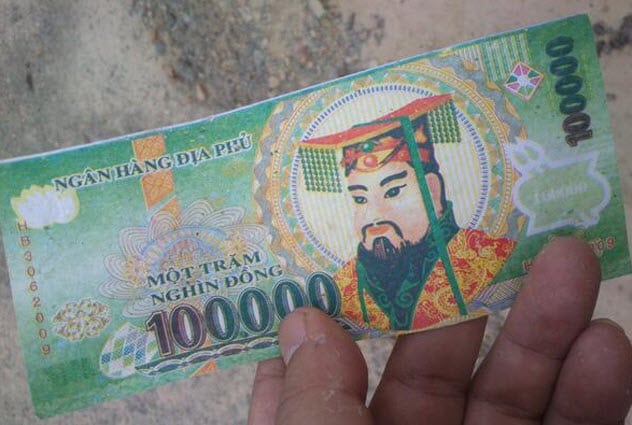
The Vietnam War left great scars in the memories of both the American and Vietnamese people. Many missing corpses of fighters from both sides still lie unburied where they fell. We often hear mentions of the “ghost of the Vietnam War,” but in Vietnam, this sentence means what it says.
Anthropologist Heonik Kwon has observed ritual practices through which local inhabitants establish relationships with ghosts in ways that go beyond the side for which the deceased fought during the war. Some Vietnamese people frequently build shrines and make offerings to the souls of dead American soldiers who died without proper burial rituals and thus became wandering, restless souls.
The ghosts of war dead can be dangerous or mischievous. (The anthropologist heard stories about a soldier from a previous war who scared young women or about ghosts entering the bodies of the living, which caused them to fall sick.) Sometimes, these ghosts become as important as local divinities.[8]
The locals make offerings, adopt these restless souls by honoring them, and believe that the living reside near the dead. In this way, local inhabitants establish close relationships with these wandering ghosts, which are similar to those among family members.
Interestingly, a common form of paying respect to these spirits is to give them “ghost money,” namely offering replica dollars which are thought to help the wandering dead to overcome their state of suffering.
2 Voluntary Death Among The Siberian Chukchi
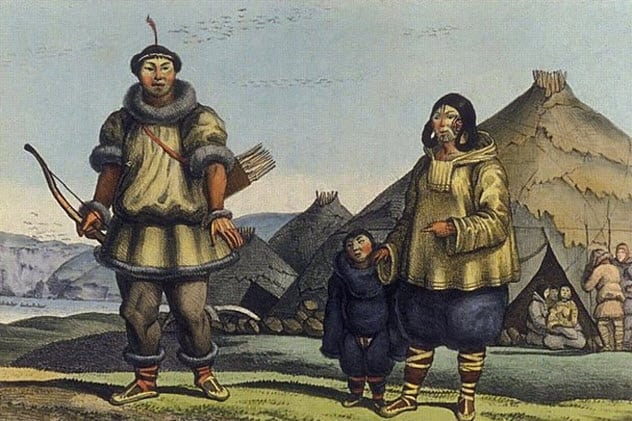
“Voluntary death,” the practice of being willingly killed by family members due to old age or illness, has been widely documented in Siberia. Already in the 18th century, an explorer reported the following about the people of the northeastern region:
In the year 1737, an old father admonished his son to hang him from the balagan [dwelling] because he was no longer useful. The son did; but because the strap broke on the first attempt, the father fell down and scolded his son for being clumsy. To correct his mistake and give better proof of his obedience and cleverness, the son hanged the father a second time with a double strap. It seems that the hope of getting to the lower, better world sooner has very much stimulated the Itelmen to suicide.[9]
As described by anthropologist Rane Willerslev, voluntary death is still practiced today among certain groups of Chukchi people. There, the act of killing a relative who asks to die is regarded as both an honorable and terrible act.
On the one hand, ancestors are pleased to be joined by the spirit of the dead. But on the other hand, causing the death of a relative remains a painful ordeal. According to Russian law, voluntary death still counts as murder (and has led to people being prosecuted and imprisoned). So the practice is now kept secret.
1 Child Death By Soul Loss In Bali
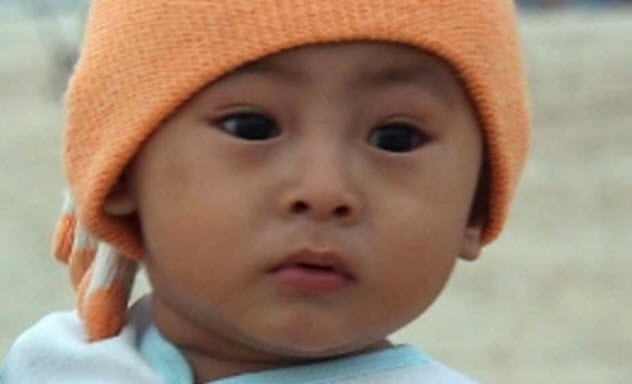
In Bali, the death of children (and sometimes of adults) has often been attributed to a sickness known as kesambet. This is thought to result from a sudden fright or shock, which causes the soul to become detached from the body.
As reported by anthropologist Unni Wikan, the illness can be passed from the mother to the child through breast milk “infected” by the sudden shock experienced by the mother. The baby will start crying continuously, get a fever, and lose appetite—often with lethal consequences.
The precautions taken against the risk of kesambet are to control one’s emotional reactions and the environment in which children live by never exposing them to loud noises and turmoil. As local women say, “It is so hard to be a mother with us. A mother must never be angry, never be sad, always control her emotions.”[10]
At the time that Unni Wikan undertook her fieldwork in Bali, almost half of the deaths of children were attributed by the locals to this syndrome.
Read more surprising traditions of death on 10 World Traditions Of Death Throughout History and 10 Historic Traditions Involving The Death Of A Child.








